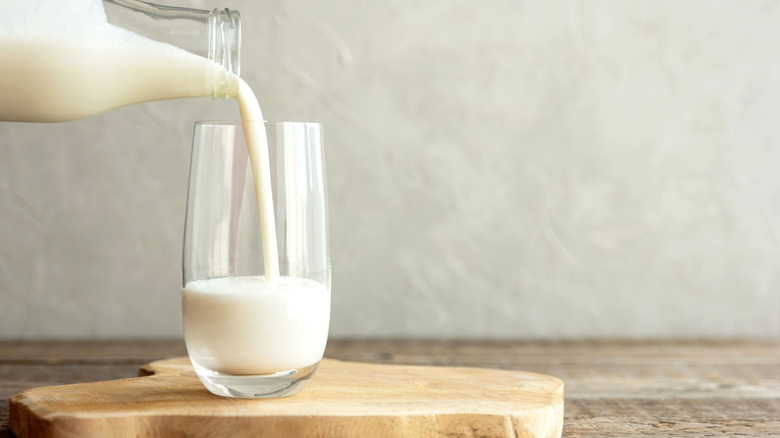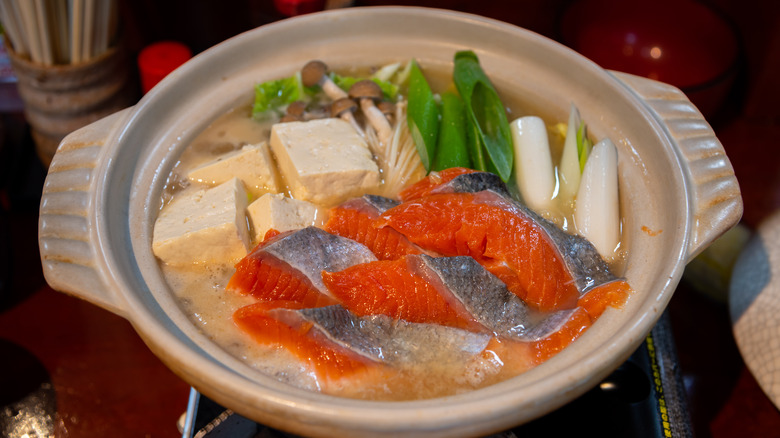Milk Might Be The Quickest Solution To Unpleasant Fish Smells
Fish is one of the most delicious and versatile proteins you can cook. Whether it's a slice of raw tuna belly atop sushi rice, a whole fried snapper at a beachside seafood shack, or a plate of citrus-marinated ceviche, fish offers a wide range of culinary possibilities.
However, some people avoid cooking and eating fish due to its characteristic odor. This smell is caused by enzymes and bacteria found in fish that break down compounds into trimethylamine, an unpleasant-smelling chemical. The intensity of the smell can vary based on the species and freshness of the fish. Fortunately, there's a simple way to reduce the odor: soaking your fish in milk before cooking. The proteins in milk bond with some of the fatty acids on the fish's surface, neutralizing the unpleasant smell and making it more palatable to people who are sensitive to fishy odors.
Eliminating fishy smells with milk
To create fish dishes free from unpleasant odors, start by purchasing fresh fish. While almost all saltwater fish have a certain amount of odor, spoiled fish will exhibit a much more pungent and unpleasant smell. Therefore, when purchasing non-frozen fish fillets from the market, opt for those with firm flesh and a mild aroma.
Once you're home with your purchased fish, soak it in milk for 20 minutes. After soaking, remove the fish from the milk, rinse it, and then pat the flesh dry with paper towels. You can then proceed to cook the fish in your preferred manner.
For example, firm-fleshed white fish like cod are delicious when cooked in foil packets with citrus, butter, and vegetables. To make this dish, place the fish on a large piece of foil and add vegetables such as asparagus or broccoli. Add thin slices of lemon and pats of butter, then season everything with salt, pepper, and crushed red pepper flakes. Drizzle some lemon juice over the top. Wrap each portion securely in foil and place it on a baking sheet. Bake until the fish is cooked through. The lemon and butter will produce steam that cooks the ingredients, leaving you with a delicious, low-fat dinner that requires almost no cleanup.
Embrace cooking fish at home
Once you've mastered the milk-soak technique to eliminate fishy odors, you can freely enjoy fish without worrying about stinking up the kitchen. For instance, after soaking salmon in milk and patting it dry, season it with salt and pepper. Sear the fillets skin-side down in a hot pan with neutral oil until the skin crisps up. To achieve optimal results, finish cooking the salmon in the oven until it is just cooked through; this will help preserve its juiciness and tender texture.
For a more Asian-inspired dish, the same salmon fillets can be used to create a Japanese hot pot, also known as nabe. To create the broth, combine dashi stock, soy sauce, sake, and mirin (sweetened sake). Add vegetables such as carrots, daikon radish, chrysanthemum greens, leeks, and mushrooms — shiitake and enoki are both great choices — in a clay pot or a small cast-iron pot. Bring the mixture to a simmer, then place large chunks of salmon into the broth. Allow the fish to cook on very low heat with the lid closed. Serve with steamed rice.



